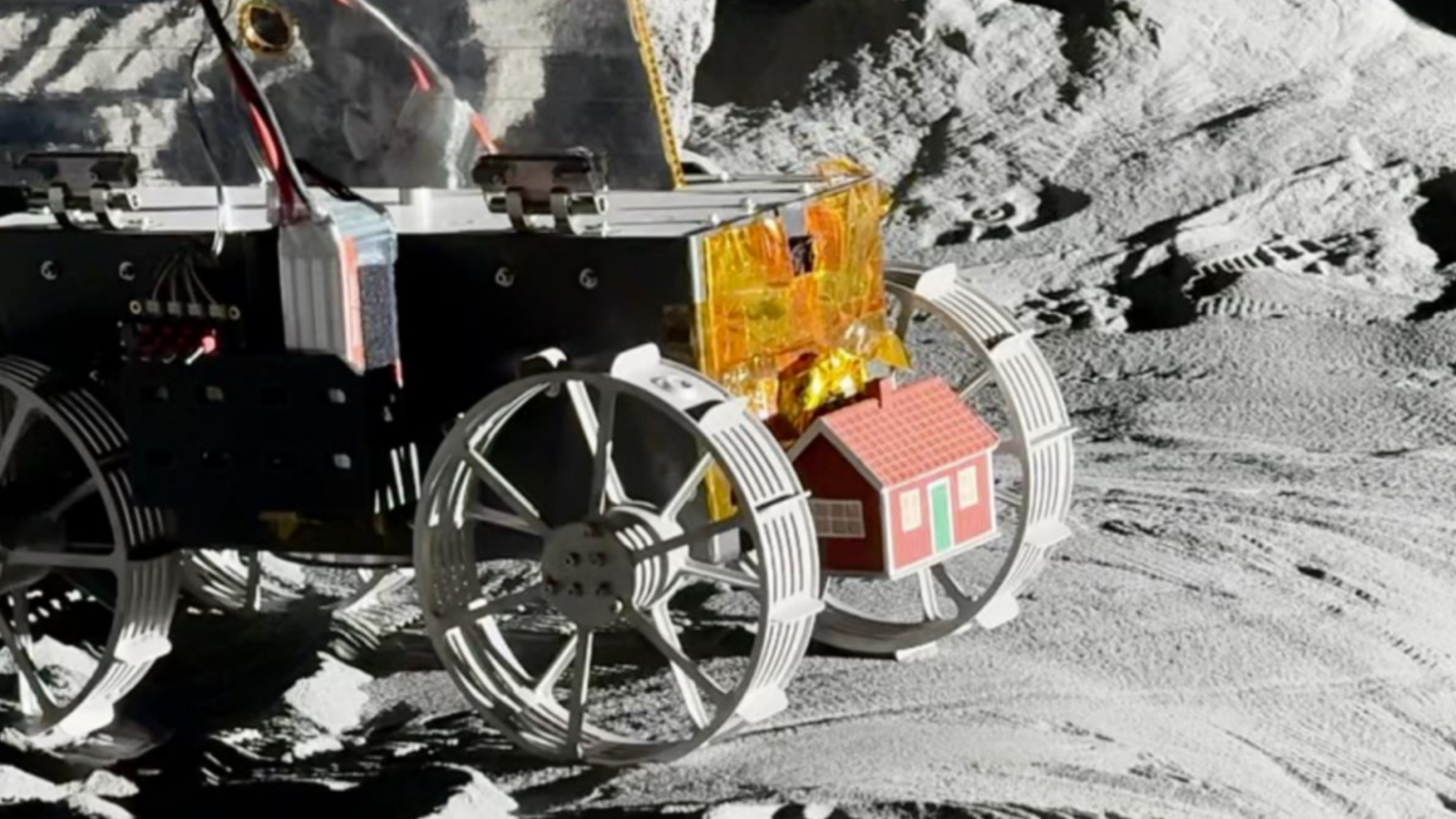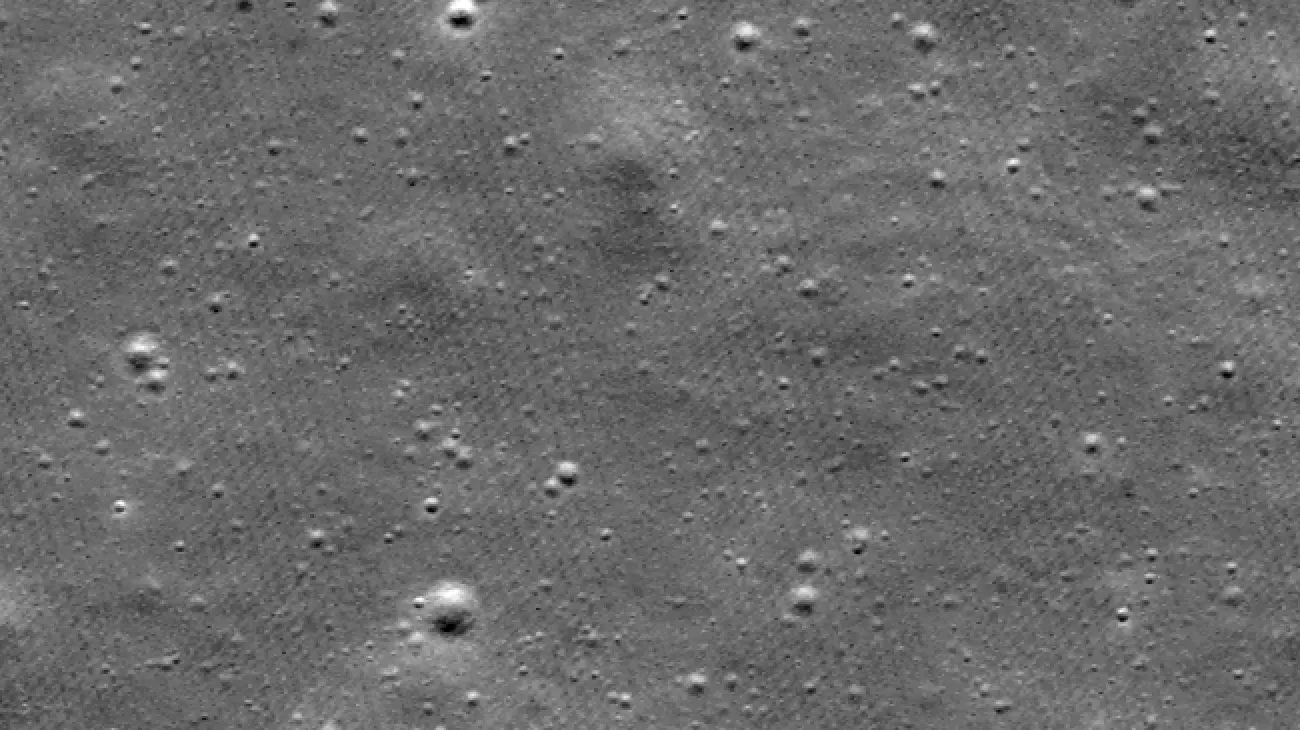Moon-orbiting spacecraft belonging to NASA and the Indian Space Research Organisation (ISRO) have both snapped photos of Japan’s ruined lunar lander Resilience, following its catastrophic “hard landing” earlier this month. Some of the images — the first to visually confirm the spacecraft’s fate — show pieces of debris scattered across the surrounding area.
The Resilience lunar lander, made and operated by the Japanese company ispace, was scheduled to land in the Mare Frigoris, or “Sea of Cold,” region of the moon’s northern hemisphere on June 5. The lander was carrying a range of scientific experiments, as well as Europe’s first ever lunar rover, named Tenacious, which was set to deploy an art piece known as “the Moonhouse” on the lunar surface.
However, operators lost contact with Resilience around 100 seconds before its scheduled touchdown. It then experienced a “hard landing” that likely tore the spacecraft apart and led to the loss of all of its payloads.
On June 11, NASA‘s Lunar Reconnaissance Orbiter (LRO) snapped the first satellite photos of the ruined lander. By comparing the new images with photos taken before the crash (see above), it’s clear that the impact left behind a dark smudge on the lunar surface. The mark is likely regolith (the layer of dust and rock that blankets the lunar bedrock) that was displaced by the impact, according to the LRO website.
On June 16, ISRO’s Chandrayaan-2 orbiter snapped additional photos of the crash site, showing the area in much greater detail (see below). Subsequent analysis of the photos revealed pieces of debris scattered around the crash site. Astronomy enthusiast Shanmuga Subramanian identified at least 12 different pieces of debris and shared images of them on the social platform X. However, there was no indication as to how far apart these pieces were.
Related: ‘Everything has changed since Apollo’: Why landing on the moon is still incredibly difficult

Telemetry data from Resilience’s final moments suggest the lander’s laser rangefinder experienced delays while measuring the probe’s distance to the lunar surface, Live Science’s sister site Space.com previously reported. “As a result, the lander was unable to decelerate sufficiently to reach the required speed for the planned lunar landing,” ispace officials wrote at the time. In a news conference on Tuesday (June 24), ispace finally confirmed that the laser rangefinder was at fault.
Resilience was the second of ispace’s Hakuto-R landers to attempt to land on the moon. Its predecessor also likely crash-landed in April 2023, after the company lost contact with it in lunar orbit.
However, the Japan Aerospace Exploration Agency’s SLIM lander (or “moon sniper”) did successfully touch down on the moon in January 2024 and remained operational for several months, despite accidentally landing upside down.

Other lunar landers
The last few years have seen a sharp rise in the number of spacecraft attempting to land on the moon.
U.S. companies have already attempted two lunar landings this year: First, on March 2, Firefly Aerospace’s Blue Ghost successfully touched down on the moon; and second, on March 7, Intuitive Machine’s IM-2 probe landed on its side and died 12 hours later.
In February 2024, Intuitive Machine’s Odysseus lander became the first American spacecraft to land on the moon in more than 50 years, but also ended up on its side.
In August 2023, ISRO successfully landed Chandrayaan-3 — India’s first-ever lunar lander — near the moon’s south pole. This spacecraft later detected the first “moonquake” in decades before shutting down after 12 days.
China‘s Chang’e 6 lander successfully touched down on the moon’s far side in June 2024 and has since returned lunar samples to Earth.

























